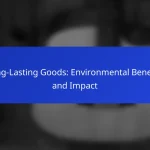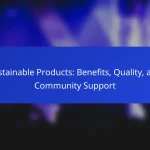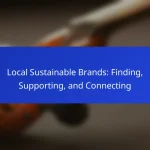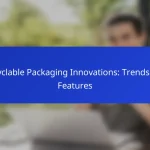Innovations in recyclable packaging are transforming the industry by emphasizing sustainability and reducing environmental impact. With advancements such as biodegradable materials, plant-based plastics, and smart packaging technology, these solutions not only enhance recyclability but also cater to the growing consumer demand for eco-friendly options. As e-commerce continues to rise, effective recyclable packaging plays a crucial role in minimizing waste and improving brand loyalty through sustainable practices.
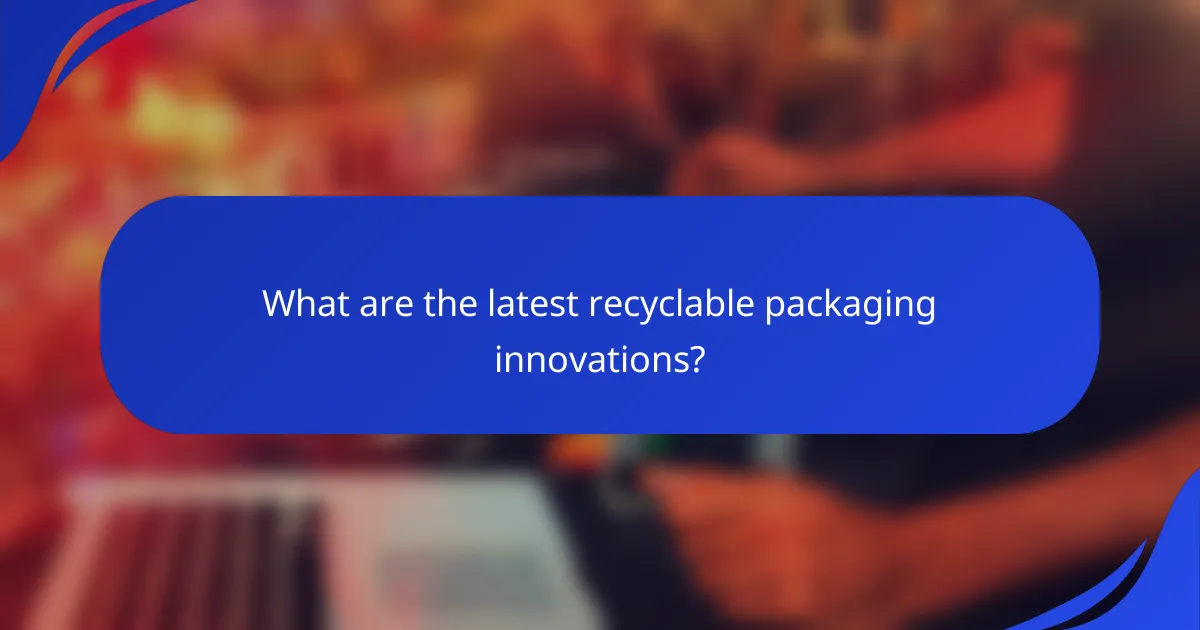
What are the latest recyclable packaging innovations?
The latest innovations in recyclable packaging focus on sustainability and reducing environmental impact. These advancements include biodegradable materials, plant-based plastics, reusable packaging systems, and smart packaging technology, all aimed at enhancing recyclability and minimizing waste.
Biodegradable materials
Biodegradable materials are designed to break down naturally over time, reducing landfill waste. Common examples include polylactic acid (PLA) and starch-based polymers, which decompose in composting conditions. When selecting biodegradable options, consider the specific conditions required for effective degradation, as not all materials will break down in standard recycling facilities.
Brands are increasingly adopting biodegradable packaging for food products and consumer goods, often highlighting their eco-friendly attributes on labels. However, it’s crucial to ensure that these materials are certified to meet recognized standards, such as ASTM D6400 or EN 13432.
Plant-based plastics
Plant-based plastics are made from renewable resources, such as corn or sugarcane, and offer a sustainable alternative to traditional petroleum-based plastics. These materials can be designed to be recyclable or biodegradable, depending on their formulation. For instance, bioplastics like PLA can be composted, while others may require industrial recycling processes.
When considering plant-based plastics, evaluate their lifecycle impact, including sourcing, production, and end-of-life options. Many companies are now incorporating these materials into their packaging to appeal to environmentally conscious consumers, often at a slightly higher cost compared to conventional plastics.
Reusable packaging systems
Reusable packaging systems focus on minimizing waste by allowing containers to be returned and refilled multiple times. This approach is gaining traction in various sectors, including food delivery and retail, where customers can return packaging for reuse. Implementing such systems can significantly reduce single-use packaging waste.
To successfully adopt reusable packaging, businesses should establish clear return processes and incentivize customers to participate. Examples include deposit return schemes or loyalty programs that reward customers for returning containers, promoting a circular economy.
Smart packaging technology
Smart packaging technology integrates digital features to enhance functionality and sustainability. This includes QR codes for recycling information, sensors that monitor freshness, and materials that change color to indicate spoilage. Such innovations not only improve user experience but also provide valuable data for manufacturers.
When implementing smart packaging, consider the balance between technology and recyclability. Ensure that any electronic components can be easily separated from the packaging for recycling purposes. This approach can help brands maintain sustainability while offering consumers greater convenience and product information.
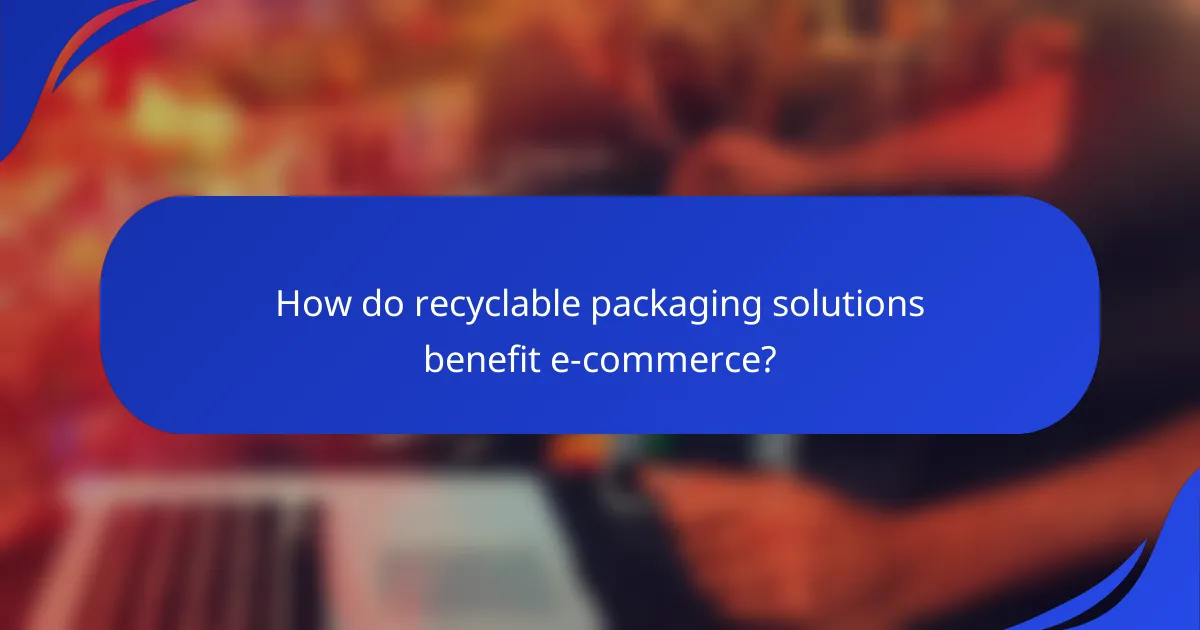
How do recyclable packaging solutions benefit e-commerce?
Recyclable packaging solutions significantly benefit e-commerce by reducing waste and enhancing customer satisfaction. These solutions promote sustainability, which is increasingly important to consumers, leading to improved brand perception and loyalty.
Reduced environmental impact
Recyclable packaging minimizes the amount of waste that ends up in landfills, contributing to a healthier environment. By using materials that can be repurposed, e-commerce businesses can lower their carbon footprint and comply with environmental regulations.
Consider adopting materials like recycled cardboard or biodegradable plastics. These options not only reduce environmental harm but can also improve your company’s sustainability ratings, appealing to eco-conscious consumers.
Enhanced brand loyalty
Implementing recyclable packaging can foster stronger brand loyalty among consumers who prioritize sustainability. Customers are more likely to support brands that demonstrate a commitment to reducing their environmental impact.
To leverage this, communicate your sustainable practices through marketing channels. Highlighting your use of recyclable packaging can differentiate your brand and attract a dedicated customer base willing to pay a premium for eco-friendly options.
Cost savings in logistics
Using recyclable packaging can lead to cost savings in logistics by reducing material costs and optimizing shipping processes. Lightweight and compact recyclable materials can lower shipping expenses, especially when transporting large volumes of products.
Evaluate your packaging design to maximize efficiency. For instance, using flat-pack designs can minimize shipping space, leading to lower transportation costs. Additionally, consider bulk purchasing of recyclable materials to take advantage of economies of scale.
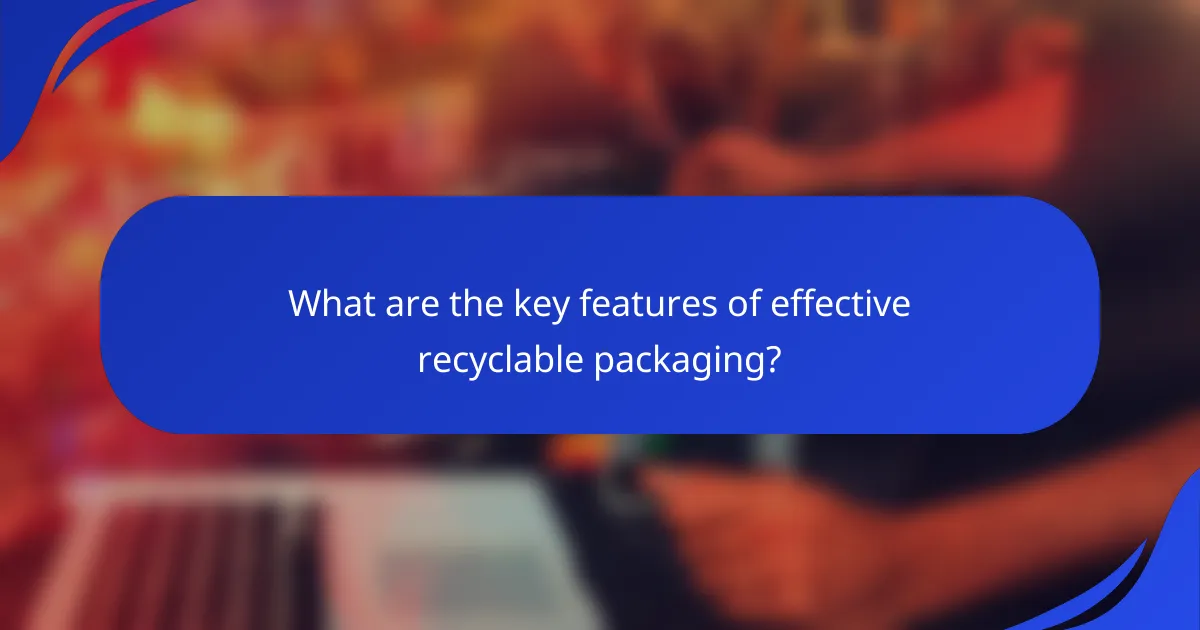
What are the key features of effective recyclable packaging?
Effective recyclable packaging must prioritize sustainability while ensuring functionality. Key features include durability, ease of recycling, and a consumer-friendly design that encourages proper disposal and reuse.
Durability and protection
Durability is essential for recyclable packaging to withstand transportation and handling without compromising the product inside. Materials like corrugated cardboard and certain plastics can provide robust protection while remaining recyclable.
Consider using multi-layered materials that maintain integrity during shipping yet are designed for easy separation at recycling facilities. This balance helps reduce waste and ensures products arrive safely to consumers.
Ease of recycling
For packaging to be truly recyclable, it should be easy for consumers to identify and process. Clear labeling with recycling symbols and instructions can significantly enhance the likelihood of proper disposal.
Additionally, using single-material designs or materials that can be easily separated is crucial. For example, a cardboard box with a plastic window may complicate recycling, whereas a fully cardboard design simplifies the process.
Consumer-friendly design
A consumer-friendly design encourages users to engage with recyclable packaging effectively. Features such as easy-open tabs, resealable closures, and clear recycling instructions can improve user experience and promote recycling habits.
Incorporating visually appealing designs that highlight the sustainability aspect can also attract environmentally conscious consumers. Brands should aim for aesthetic appeal while ensuring functionality aligns with recycling goals.
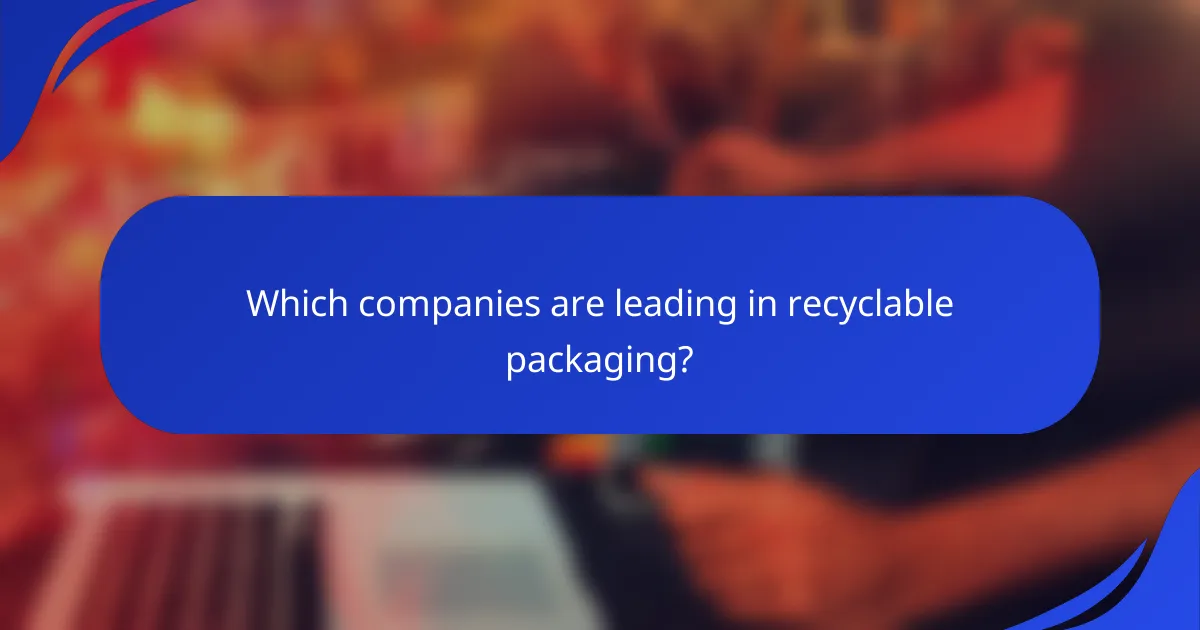
Which companies are leading in recyclable packaging?
Several companies are at the forefront of recyclable packaging innovations, focusing on sustainability and environmental responsibility. Notable leaders include Unilever, Amazon, and Coca-Cola, each implementing unique strategies to enhance their packaging’s recyclability.
Unilever’s sustainable initiatives
Unilever has committed to making all of its plastic packaging recyclable, reusable, or compostable by a set target year. The company focuses on reducing plastic waste by investing in alternative materials and promoting the use of recycled content in its packaging.
One of Unilever’s key initiatives is the “Less Plastic, Better Plastic” program, which aims to reduce the amount of plastic used in its products while ensuring that the remaining packaging is easily recyclable. This includes using materials like paper and bio-based plastics.
Amazon’s Frustration-Free Packaging
Amazon’s Frustration-Free Packaging program is designed to minimize waste and enhance the recyclability of its shipping materials. The initiative focuses on using recyclable materials and reducing excess packaging to create a more sustainable delivery process.
Through this program, Amazon encourages manufacturers to design packaging that is easy to open and fully recyclable. This not only benefits the environment but also improves the customer experience by reducing packaging waste.
Coca-Cola’s World Without Waste
Coca-Cola’s World Without Waste initiative aims to collect and recycle a bottle or can for every one sold by 2030. The company is investing in sustainable packaging solutions, including increasing the use of recycled materials in its products.
As part of this effort, Coca-Cola has introduced new packaging designs that are 100% recyclable, such as its PlantBottle, which incorporates plant-based materials. This approach not only reduces reliance on virgin plastics but also supports a circular economy.
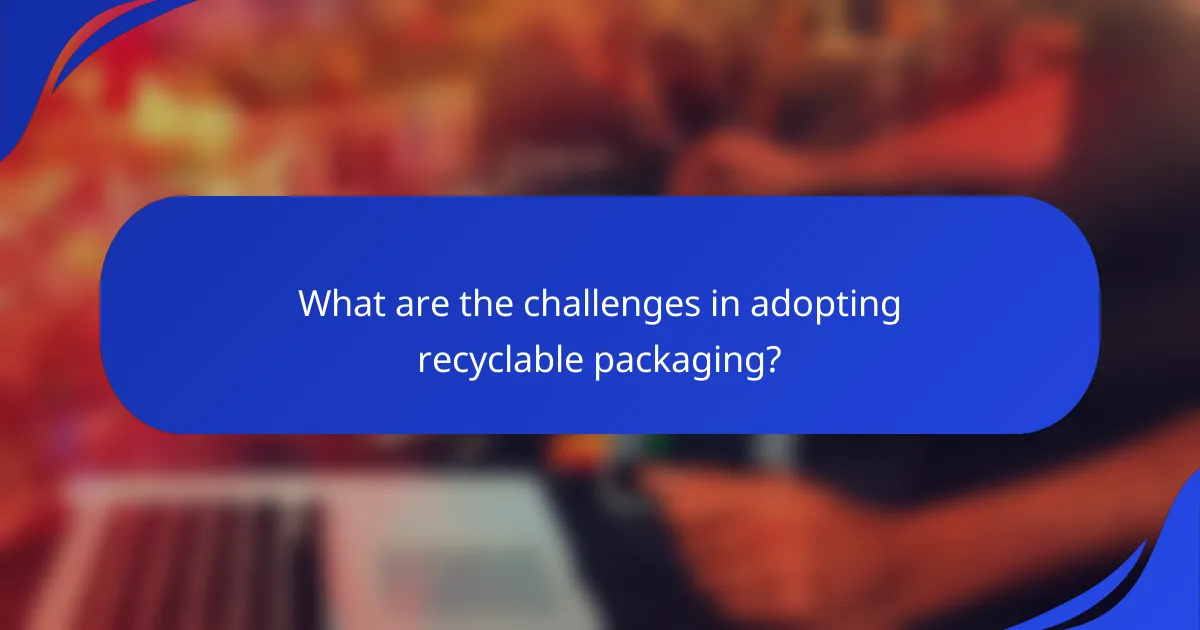
What are the challenges in adopting recyclable packaging?
Adopting recyclable packaging presents several challenges that companies must navigate to ensure sustainability. Key issues include the cost of materials, consumer awareness, and limitations within the supply chain.
Cost of materials
The cost of recyclable packaging materials can be significantly higher than traditional options. Companies often face increased expenses when sourcing sustainable materials, which can impact pricing strategies. For example, biodegradable plastics may cost 20-30% more than conventional plastics.
To mitigate these costs, businesses can explore bulk purchasing agreements or partnerships with suppliers specializing in sustainable materials. Additionally, investing in research for cost-effective alternatives can yield long-term savings.
Consumer awareness and behavior
Consumer awareness regarding recyclable packaging varies widely, affecting purchasing decisions. Many consumers are still unfamiliar with recycling symbols and guidelines, leading to confusion about proper disposal methods. Brands must educate their customers on the benefits and proper use of recyclable packaging.
Engaging marketing campaigns that highlight the environmental impact of choosing recyclable options can drive consumer behavior. Providing clear instructions on how to recycle packaging can also enhance participation and reduce contamination rates.
Supply chain limitations
Supply chain limitations can hinder the effective implementation of recyclable packaging. Companies may struggle with sourcing materials that meet sustainability standards while maintaining production efficiency. This can lead to delays and increased operational costs.
To address these limitations, businesses should evaluate their supply chains for potential bottlenecks and seek out suppliers committed to sustainability. Collaborating with logistics partners who understand recyclable materials can also streamline processes and improve overall efficiency.
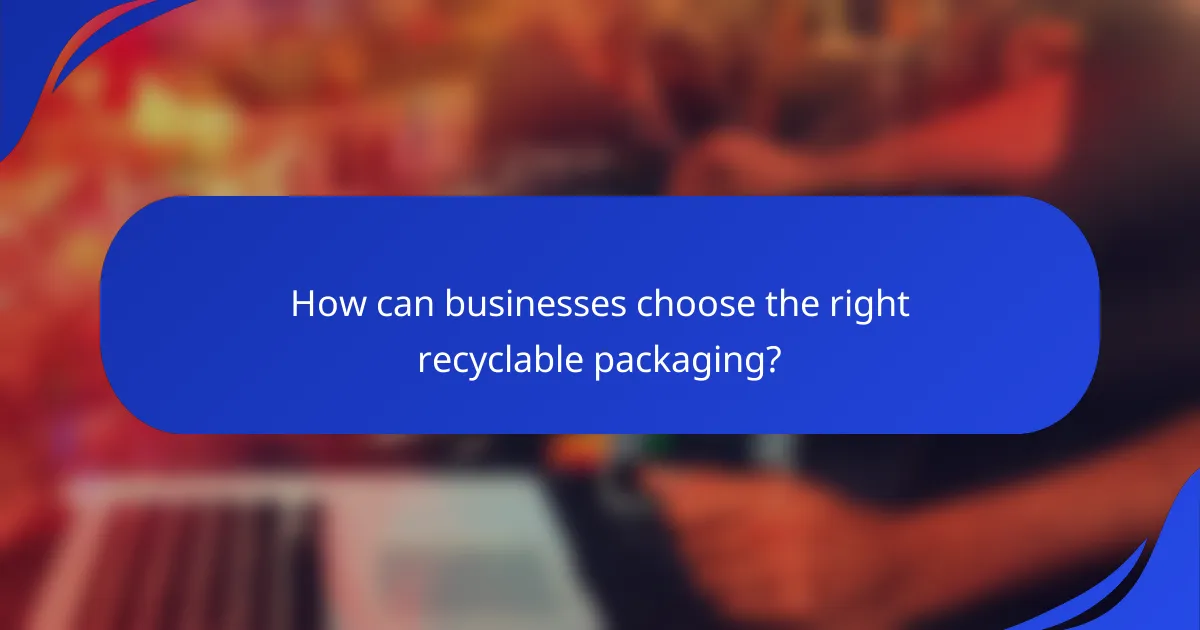
How can businesses choose the right recyclable packaging?
Businesses can choose the right recyclable packaging by evaluating material options and assessing supplier capabilities. This ensures they select sustainable solutions that align with their environmental goals while meeting practical needs.
Assessing material options
When assessing material options for recyclable packaging, consider factors such as the recyclability of the materials, their environmental impact, and cost-effectiveness. Common recyclable materials include paper, cardboard, glass, and certain plastics like PET and HDPE.
Evaluate the end-of-life scenarios for each material. For instance, paper and cardboard are widely accepted in recycling programs, while some plastics may require specific facilities. Understanding local recycling capabilities can guide material selection.
Evaluating supplier capabilities
Evaluating supplier capabilities involves assessing their experience with recyclable packaging and their commitment to sustainability. Look for suppliers who can provide certifications or evidence of their recycling processes and environmental practices.
Consider the supplier’s ability to meet your production needs and timelines. Establish clear communication regarding your requirements for recyclable packaging, including volume, design, and compliance with local regulations. This will help avoid potential pitfalls in sourcing and ensure a smooth partnership.
